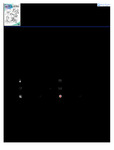Challenges and opportunities in the care of chronic subdural haematoma: perspectives from a multi-disciplinary working group on the need for change
| dc.contributor.author | Stubbs, DJ | |
| dc.contributor.author | Davies, B | |
| dc.contributor.author | Hutchinson, P | |
| dc.contributor.author | Menon, DK | |
| dc.contributor.author | Bashford, TH | |
| dc.contributor.author | Edlmann, Ellie | |
| dc.contributor.author | Bateman, A | |
| dc.contributor.author | Braude, P | |
| dc.contributor.author | Burnstein, R | |
| dc.contributor.author | Camp, S | |
| dc.contributor.author | Carr, G | |
| dc.contributor.author | Clarkson, PJ | |
| dc.contributor.author | Coles, J | |
| dc.contributor.author | Dhesi, J | |
| dc.contributor.author | Dinsmore, J | |
| dc.contributor.author | Dixon-Woods, M | |
| dc.contributor.author | Ercole, A | |
| dc.contributor.author | Evans, N | |
| dc.contributor.author | Figaji, A | |
| dc.contributor.author | Griffin, S | |
| dc.contributor.author | Grundy, P | |
| dc.contributor.author | Hartley, P | |
| dc.contributor.author | Joannides, A | |
| dc.contributor.author | Kolias, A | |
| dc.contributor.author | Lecky, F | |
| dc.contributor.author | May, P | |
| dc.contributor.author | Moppett, I | |
| dc.contributor.author | Morris, S | |
| dc.contributor.author | Nathanson, M | |
| dc.contributor.author | Outtrim, J | |
| dc.contributor.author | Owen, N | |
| dc.contributor.author | Phillips, N | |
| dc.contributor.author | Quinn, T | |
| dc.contributor.author | Ralhan, S | |
| dc.contributor.author | Sapsford, D | |
| dc.contributor.author | Shipway, DJH | |
| dc.contributor.author | Skitterall, C | |
| dc.contributor.author | Smith, M | |
| dc.contributor.author | Swart, M | |
| dc.contributor.author | Thomas, W | |
| dc.contributor.author | Walton, K | |
| dc.contributor.author | Wareham, N | |
| dc.contributor.author | Whitfield, Peter | |
| dc.contributor.author | Wilson, SR | |
| dc.contributor.author | Vindlacheruvu, M | |
| dc.date.accessioned | 2022-04-26T11:16:31Z | |
| dc.date.available | 2022-04-26T11:16:31Z | |
| dc.date.issued | 2022-01-28 | |
| dc.identifier.issn | 0268-8697 | |
| dc.identifier.issn | 1360-046X | |
| dc.identifier.uri | http://hdl.handle.net/10026.1/19070 | |
| dc.description.abstract |
INTRODUCTION: A chronic subdural haematoma (cSDH) is a collection of altered blood products between the dura and brain resulting in a slowly evolving neurological deficit. It is increasingly common and, in high income countries, affects an older, multimorbid population. With changing demographics improving the care of this cohort is of increasing importance. METHODS: We convened a cross-disciplinary working group (the 'Improving Care in Elderly Neurosurgery Initiative') in October 2020. This comprised experts in neurosurgical care and a range of perioperative stakeholders. An Implementation Science framework was used to structure discussions around the challenges of cSDH care within the United Kingdom. The outcomes of these discussions were recorded and summarised, before being circulated to all attendees for comment and refinement. RESULTS: The working group identified four key requirements for improving cSDH care: (1) data, audit, and natural history; (2) evidence-based guidelines and pathways; (3) shared decision-making; and (4) an overarching quality improvement strategy. Frequent transfers between care providers were identified as impacting on both perioperative care and presenting a barrier to effective data collection and teamworking. Improvement initiatives must be cognizant of the complex, system-wide nature of the problem, and may require a combination of targeted trials at points of clinical equipoise (such as anesthetic technique or anticoagulant management), evidence-based guideline development, and a cycle of knowledge acquisition and implementation. CONCLUSION: The care of cSDH is a growing clinical problem. Lessons may be learned from the standardised pathways of care such as those as used in hip fracture and stroke. A defined care pathway for cSDH, encompassing perioperative care and rehabilitation, could plausibly improve patient outcomes but work remains to tailor such a pathway to cSDH care. The development of such a pathway at a national level should be a priority, and the focus of future work. | |
| dc.format.extent | 1-9 | |
| dc.format.medium | Print-Electronic | |
| dc.language | en | |
| dc.language.iso | eng | |
| dc.publisher | Society of British Neurological Surgeons | |
| dc.subject | Chronic subdural hematoma | |
| dc.subject | perioperative medicine | |
| dc.subject | quality improvement | |
| dc.subject | review | |
| dc.title | Challenges and opportunities in the care of chronic subdural haematoma: perspectives from a multi-disciplinary working group on the need for change | |
| dc.type | journal-article | |
| dc.type | Journal Article | |
| dc.type | Review | |
| plymouth.author-url | https://www.webofscience.com/api/gateway?GWVersion=2&SrcApp=PARTNER_APP&SrcAuth=LinksAMR&KeyUT=WOS:000750894200001&DestLinkType=FullRecord&DestApp=ALL_WOS&UsrCustomerID=11bb513d99f797142bcfeffcc58ea008 | |
| plymouth.issue | 5 | |
| plymouth.volume | 36 | |
| plymouth.publication-status | Published | |
| plymouth.journal | British Journal of Neurosurgery | |
| dc.identifier.doi | 10.1080/02688697.2021.2024508 | |
| plymouth.organisational-group | /Plymouth | |
| plymouth.organisational-group | /Plymouth/Faculty of Health | |
| plymouth.organisational-group | /Plymouth/Faculty of Health/Peninsula Medical School | |
| plymouth.organisational-group | /Plymouth/REF 2021 Researchers by UoA | |
| plymouth.organisational-group | /Plymouth/REF 2021 Researchers by UoA/UoA01 Clinical Medicine | |
| plymouth.organisational-group | /Plymouth/Research Groups | |
| plymouth.organisational-group | /Plymouth/Research Groups/FoH - Applied Parkinson's Research | |
| plymouth.organisational-group | /Plymouth/Research Groups/Plymouth Institute of Health and Care Research (PIHR) | |
| plymouth.organisational-group | /Plymouth/Users by role | |
| plymouth.organisational-group | /Plymouth/Users by role/Academics | |
| plymouth.organisational-group | /Plymouth/Users by role/Researchers in ResearchFish submission | |
| dc.publisher.place | England | |
| dcterms.dateAccepted | 2021-12-27 | |
| dc.rights.embargodate | 2022-4-27 | |
| dc.identifier.eissn | 1360-046X | |
| dc.rights.embargoperiod | Not known | |
| rioxxterms.versionofrecord | 10.1080/02688697.2021.2024508 | |
| rioxxterms.licenseref.uri | http://www.rioxx.net/licenses/all-rights-reserved | |
| rioxxterms.type | Journal Article/Review |


